B2B Marketing Services for Predictable Growth.
Delivering consistent, measurable results
through insight-activated B2B Marketing Solutions.

Attract Big Brands &
Grow Faster.
Unlock
Your Growth.
Digital Marketing Strategy
Craft a compelling, Unique Value Proposition that resonates across all touchpoints, from your corporate website and LinkedIn profile to online directories and beyond. We'll also help you define your Ideal Customer (or Company) profile and develop a Leads Qualification Framework to optimize your Digital Marketing efforts and drive results.
Content Marketing Services
Collaborate with us to craft a tailored content marketing strategy that aligns seamlessly with your business goals, schedule, and financial plan. Our team of experts will lead you through each phase, from thorough topic exploration and content blueprinting to stimulating demand and strategically disseminating content. We aim to assist you in producing engaging content that connects with your target audience, boosts organic traffic, and fuels your business expansion.
Marketing for IT Companies
We amplify your voice, cultivate real connections, and build lasting impact through strategic B2B marketing. Industry expertise meets data-driven insights, weaving authentic narratives that resonate. There are no fleeting trends, just collaborative growth partnerships driven by transparency and empathy.
Search Engine Optimization (SEO)
Considering various factors like the competitive environment, cost structure, and potential outcomes, we can craft an SEO strategy tailored to your needs. This encompasses on-page and off-page optimization, technical SEO performance analysis/enhancement, an internal linking strategy, and organic, paid, or partnership link-building methods.
Conversion optimization
To unlock your website's hidden potential and skyrocket your conversion rates, we'll unleash a barrage of conversion rate optimization (CRO) techniques, meticulously crafting a data-driven strategy to transform your website into a magnet for conversions.
Digital Marketing Audit Services
Maximize your marketing potential with our Digital Marketing Audit Services. We assess your SEO, Content, and Digital Advertising to highlight key improvement areas. Our audits provide actionable insights and strategies for effective growth, helping you optimize your online impact.
B2B Marketing Consulting
Unleash your business's full potential through our B2B Marketing Consulting Services. Under Volodymyr Kuriatnyk's expert guidance, we provide customized strategic solutions to meet your requirements. Whether boosting sales, aligning marketing strategies, or pioneering AI-driven tools, we empower you to excel in the digital realm.
Balanced Budget With Top ROMI
Utilize strategic budgeting and cost-effective techniques to elevate your business to new levels of success. Our services include developing detailed budgets, enhancing resource distribution, utilizing data analytics, identifying efficient solutions, and streamlining operations. Embrace resource optimization for remarkable achievements and collaborate with us to attain sustainable growth.
Data Driven Approach
Businesses lacking in data collection, analysis, and utilization are notably disadvantaged in the present data-centric landscape. Collaborate with us to formulate a holistic analytics approach that harmonizes your Business Development, Marketing, and Sales endeavors with well-defined objectives and performance metrics.
Our Clients Partners
Get Results.
Presentain
Presentain’s iOS and Android apps help presenters, and their audiences connect on a whole new level. The application lets the presenter broadcast slides and get audience feedback in real-time. It also allows audience members to send questions to the presenter, effortlessly connect with the presenter’s social media accounts, and even record the presentation.
As a growth-stage startup, Presentain sought Digital Bloom’s assistance to enhance the performance of its marketing campaigns.
Services provided
Inbound Marketing Strategy (Positioning, UVP Design, Pricing Optimization, Website Redesign), Content Marketing Strategy, Conversion Rates Optimization (AppStore Optimization), E-Mail Marketing.
Success story
After six months of collaboration, our digital marketing agency increased the Monthly Recurring Revenue by 74.9% and LTV by 103.5%. And that was just the beginning – month after month, those numbers continue to improve.
Increase in Monthly Recurring Revenue.
Increase in Customer Lifetime Value.


All-In-One B2B Marketing Services For SPD Technology.
SPD Technology, an award-winning Software Product Development Company with 4 R&D offices in Eastern Europe and around 17 years of experience in designing, building, streamlining, and supporting software products for businesses from dozens of industries.
Services provided
Inbound Marketing Strategy (Positioning, UVP Design, Website Redesign), Customer Value Journey, Efficient Content Marketing Strategy, Conversion Rates Optimization, SEO Optimization Strategy;
Success story
In just one year of collaboration with our digital marketing agency, more than $1M worth of marketing-attributed deals were added to the sales pipeline; the created content was organically referenced as a source of professional information by Verizon Business, GoDaddy, BBC, and others; over 1.5 years, relevant website traffic from the targeted region grew from zero to more than 2,000 visits per month;
Worth of marketing-attributed deals were added to the sales pipeline.
Relevant website visits from the targeted regions, from zero, just in over a year.
Achievements
by Numbers.
Increase in Monthly Recurring Revenue.
The annual Sales Pipeline value for a single client.
Month from kickoff to delivering the first Lead.
Leads per month in a highly competitive environment.
What People Say
About Us.





Find Your
Perfect Fit.
Co-pilot
We act as the adviser, providing strategy and direction, while your Digital Marketing Team executes the work.
Guided flight
Through mentoring, planning, monitoring, and support, we collaborate side-by-side to achieve the desired results.
Autopilot
Unlock the power of B2B Digital Marketing with our fully 'done-for-you' service. From strategy to execution, and from support to performance monitoring, we've got every aspect covered for you.
We Will Win
Your Business's Heart.
Today, more than ever, you need RESULTS.
We leverage data-driven strategies and deep industry expertise to optimize your Digital Marketing, driving qualified leads and increasing revenue without headcount expansion.
The outcome? More deals, more revenue, and happier teams.





B2B Marketing Agency
You Can Trust.
Certified
To join The Digital Bloom, candidates must clear an online exam and earn a certification from DigitalMarketer.com, costing $495.00. This step ensures that members are skilled and recognized in the digital marketing industry.
Focused
At The Digital Bloom, everyone is part of your team, providing laser-focused attention solely on your tasks without juggling multiple clients, ensuring dedicated support and precision in meeting your objectives.
Experienced
The Digital Bloom's team boasts a rich background from Digital Startups to Enterprises, with expertise from Education to Software Development, enabling them to understand and address your business's unique challenges efficiently.
Only Certified
Digital Marketing Experts.
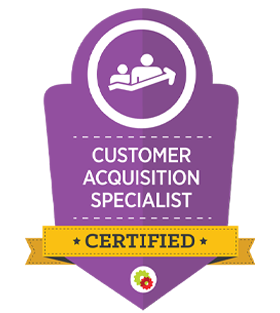
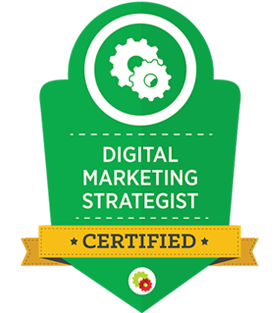
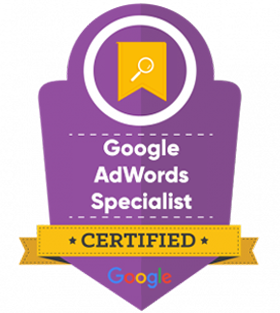
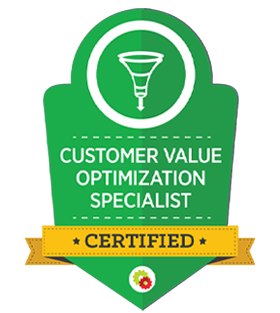
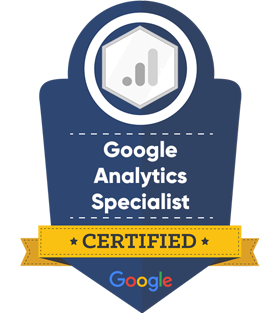


Insights from our experts.

The Digital Bloom Thrives with a Netty Award Nomination for Excellence in Digital Marketing
The Digital Bloom is blossoming with pride after being nominated for a coveted Netty Award in the Digital Marketing category.
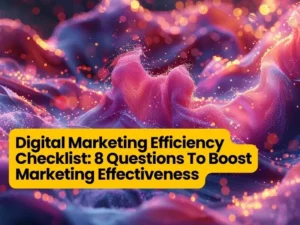
Digital Marketing Efficiency Checklist: 8 Questions To Boost Marketing Effectiveness
In this article, we tackle the confusion around digital marketing results. Feeling lost in the data? We decode key metrics & equip you to transform them into actionable insights that drive success.
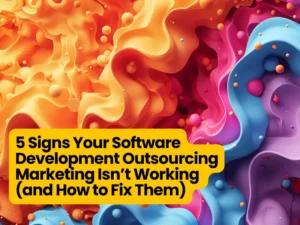
Marketing for IT Companies: 5 Signs Your Marketing Isn’t Working (and How to Fix Them)
Discover five signs that your software development outsourcing marketing isn’t effective. Learn how to boost creativity, retain leads, optimize ROI, emphasize value, and enhance brand visibility.

Marketing for IT Companies: 5 Marketing Mistakes Every Business Should Avoid
Learn how to avoid common marketing mistakes and grow your software development outsourcing business with valuable insights and strategies.

Marketing for IT Companies: 8 Questions to Measure and Improve Your Sales Team’s Performance
Sales performance got you stressed? Breathe easy! Ask these 8 powerful questions to diagnose & fix your sales team’s performance. Attract the right clients, optimize your funnel, and watch your sales soar.

Mastering Marketing and Sales Alignment in 2024: A How-to Guide for IT Companies
Are your marketing efforts attracting the right leads? It’s time to bridge the gap between Marketing and Sales through actionable steps like defining “qualified leads” together, analyzing data to refine targeting, and crafting collaborative content that resonates.
Start Your Growth Journey Today.
72%
Increase in Monthly Recurring Revenue
40+
Leads per month in a highly competitive environment
1
Month from kickoff to delivering the first Lead
Got questions?
We have answers.
How Does The Digital Bloom Agency Measure the Success of Its Digital Marketing Strategies?
Success is measured through increased Revenue, lower Customer Acquisition Costs, and improved Engagement Metrics. Our agency employs various tools and strategies, such as Google Analytics, Google Looker Studio, and CRM Dashboards, to provide transparent and actionable insights, ensuring each marketing effort is data-driven and results-oriented.
What Types of Businesses Benefit Most from The Digital Bloom Agency's Services?
Businesses seeking to improve their Inbound Marketing Strategies, whether through targeted Content Marketing strategy, SEO Optimization, or efficient Budgeting for maximum ROI, can benefit significantly from our services. We cater to various business sizes and types, offering personalized strategies for each.
What Makes The Digital Bloom a Unique B2B Marketing Agency?
Digital Bloom stands out as a digital marketing firm due to its data-driven, tailored strategies designed to increase revenue and reduce customer acquisition costs. Our approach involves understanding your business needs and crafting unique solutions to address critical challenges such as missed target audiences, content inefficiency, SEO inefficiency, low conversion rates, budget inefficiencies, and lack of transparency.
Hiring a B2B Marketing Agency - How To Do It Right?
Understanding the expertise of an digital marketing agency and ensuring it aligns with your business goals is crucial when hiring one. This approach ensures that the agency’s capabilities match your needs, leading to more effective marketing strategies and better results. The key steps include evaluating the agency’s track record, understanding its approach to inbound marketing, assessing how they measure success, and ensuring they have a clear communication strategy. Establishing a solid collaborative relationship where both parties are clear about expectations and objectives is crucial—regular communication and performance reviews help adapt strategy for optimal results.
For more detailed information, you can read our article Working with a Digital Marketing Agency in 2024.




